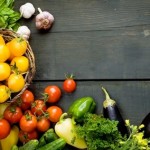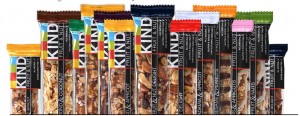Smart Choices Make for a Healthier Diet

 Recently, I fielded some questions from a local college student who is in the middle of a research project on health food. She discovered the FoodTrients website and wanted to use me as a source for some of her research. I, in turn, reached out to a nutritionist who works with me in my skilled nursing facilities to help answer the more technical questions.
Recently, I fielded some questions from a local college student who is in the middle of a research project on health food. She discovered the FoodTrients website and wanted to use me as a source for some of her research. I, in turn, reached out to a nutritionist who works with me in my skilled nursing facilities to help answer the more technical questions.
This was an interesting exercise and I thought I would share the results since some of you might have similar questions about nutrition and eating habits.
One of the questions dealt with whey protein isolate. Whey protein isolate is easy to digest and contains all the amino acids a body needs but none of the fat or carbohydrates of milk or cheese. (Whey is a byproduct of the cheese-making process.) Unless you are a body-builder, you’re probably getting all the protein you need without adding even more to your diet in the form of a supplement or protein powder. Vegetarians might be tempted to try using it, but whey can cause bloating and gastrointestinal irritation, especially for those who are lactose-intolerant. Lean sources of natural protein such as fish, beans, and soy are easy to come by and can make delicious recipes. See my cookbook, FOODTRIENTS: Age-Defying Recipes for a Sustainable Life, for recipes using all of these proteins.
What health trends that are mostly hype? Like many healthy trends, gluten-free foods are mostly hyped. A very small percentage of the population has an allergy to wheat, rye, or barley—also known as celiac disease. At most, 1% of Americans have the autoimmune disorder that damages the lining of their small intestines. Most of us have no reason to avoid the gluten found in wheat. Nonetheless, the label “gluten-free” has been slapped on items that never had any wheat in them in the first place — corn chips, potato chips, and popcorn. If you don’t have celiac disease, there is no health benefit for you in eating these items unless you want to have less gluten in your diet. However, just because something is gluten free, it doesn’t mean it’s healthier. Gluten-free snacks are still snacks that can be laden with salt, fat, and/or sugar.
 How about snack bars? We also took a look at the wisdom of eating healthy snack bars. My nutritionist and I both advocate eating every 2-3 hours, or about 5 small meals or snacks per day. Eating this way keeps blood sugar steady and leads to the consumption of less food overall throughout the day. Why? Because if you aren’t ravenously hungry, you eat less per meal and are less likely to make poor food choices such as reaching for gluten-free corn chips or a stack of cookies. The 5 meals or snacks you eat should have some lean protein (like nuts or fat-free yogurt) and either a fruit or a vegetable component. Healthy snack bars like the KIND bars (www.kindsnacks.com) with all-natural nuts and dried fruits would fit nicely into this plan. See my blog titled “Can Snacks Be Healthy AND Delicious?” for more wholesome snack ideas.
How about snack bars? We also took a look at the wisdom of eating healthy snack bars. My nutritionist and I both advocate eating every 2-3 hours, or about 5 small meals or snacks per day. Eating this way keeps blood sugar steady and leads to the consumption of less food overall throughout the day. Why? Because if you aren’t ravenously hungry, you eat less per meal and are less likely to make poor food choices such as reaching for gluten-free corn chips or a stack of cookies. The 5 meals or snacks you eat should have some lean protein (like nuts or fat-free yogurt) and either a fruit or a vegetable component. Healthy snack bars like the KIND bars (www.kindsnacks.com) with all-natural nuts and dried fruits would fit nicely into this plan. See my blog titled “Can Snacks Be Healthy AND Delicious?” for more wholesome snack ideas.